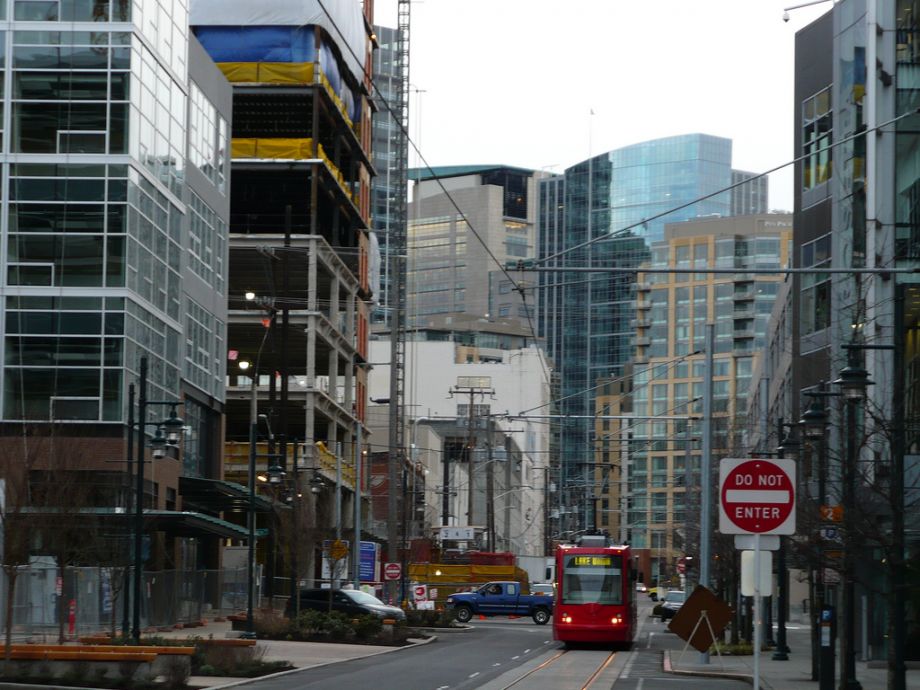‘Tis the season for transit doomsday plans. As public transit authorities continue their half-century duel with politicians over funding, desperate agencies sometimes release so-called doomsday maps and schedules, which show how service would get cut if money for operations and capital improvements is not forthcoming. SEPTA, which serves the Philadelphia region, released its plea to Pennsylvania state legislators in November with a drastically scaled-back rail map. Now, it’s Seattle’s turn.
King County Metro recently unveiled service cuts that would go into effect next year if funding needs aren’t met, and one thing stands out: The South Lake Union streetcar would be rendered almost completely useless. With just two trains per hour in each direction during most of the day, the line would be reduced to a very expensive paratransit service, occasionally rolling by for those physically unable to walk the line’s 1.3-mile length.
Peak service would be trimmed to one train every 15 minutes — right now area employers pay to have 10-minute frequencies in the afternoon — and service would become half-hourly during the day and on weekends. Trains would stop altogether at 7pm, meaning that even office workers couldn’t always rely on them. For a line whose entire length takes less than 30 minutes to walk, these frequencies would make the streetcar meaningless to everybody not commuting during rush hour, and even for many of those who do.
But while South Lake Union service would be cut in half, the total cut in the operating budget is only 17 percent. To explain why some services like the streetcar were cut more than others, Metro wrote the following on its website:
The guidelines also help us make the best use of fewer transit dollars by keeping service where it’s needed most: highly productive routes that carry many riders, low-income and minority communities where many people rely on buses, and routes that get people to key destinations across King County.
The implication is clear: Despite the tens of millions of dollars in capital investment, King County Metro does not consider the streetcar a particularly efficient mode of transit, and doesn’t think it will be missed as much as its higher-ridership bus lines.
It’s not surprising that a very short line — it runs from South Lake Union, increasingly Amazon’s company town in the city, through Belltown and then ends at the edge of downtown Seattle — that runs in mixed traffic with no dedicated lane isn’t very productive at moving people. But mobility isn’t really a factor in the nation’s recent streetcar revival, as many backers will readily admit. Rather, streetcars are supposed to encourage development. Cause and effect are debatable, but South Lake Union has experienced a boom in growth, largely centered around Amazon and its employees, since the line opened six years ago.
But as Metro’s doomsday plan shows, the inability to move people efficiently sometimes has consequences for streetcars. When money gets tight, they’re the first to go. Rail may signal permanence but, just like Seattle’s prewar streetcar network and the waterfront light rail line that closed in 2005, any service can be undone.
The Works is made possible with the support of the Surdna Foundation.
Stephen J. Smith is a reporter based in New York. He has written about transportation, infrastructure and real estate for a variety of publications including New York Yimby, where he is currently an editor, Next City, City Lab and the New York Observer.

















